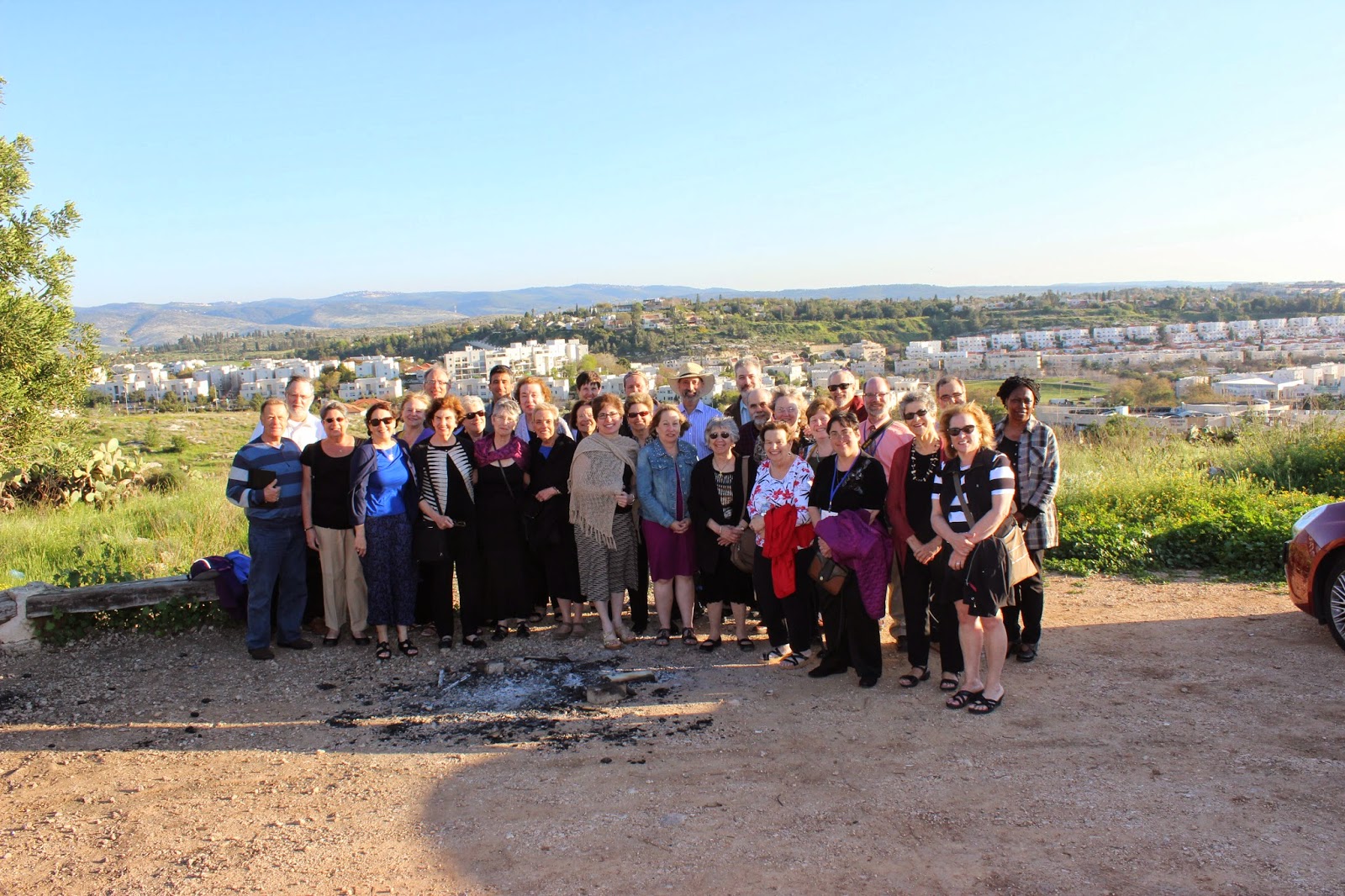Final Day and Departure
Realizing it was our final day in Israel added
a bittersweet note to Sunday. We had two
sites to visit, some time for shopping and packing, a wrap up session and a
farewell dinner. After that it was on to
the airport for 29 of the 31. Liz and
Bernice would remain and travel on the own for another week.
Our
first site was the Military Cemetery on Mt. Herzl. Uri began our visit by reading from a book
about a fallen soldier, Guni, written by his mother.
This was a way to connect to other soldiers
who died protecting the country by becoming closer through the story of one
man. We visited the grave of Yoni Netanyahu, the fallen hero of the Entebbe
rescue in 1976, as well as the brother of the Prime Minister. We stopped by the graves of the 35 young men
in 1947 who were slaughtered in their attempt to assist and defend the four
kibbutzim of Gush Etzion. It was
difficult not to notice the ages of the majority of the deceased, being in
their early twenty’s as well as the egalitarian nature of both the grave stones
and that a general could be buried next to someone of the lowest ranks.
From
there we made our way up the hill to the section containing the graves of the leaders
of Israel. These grave markers are
different than the rest of the military markers. The stones for Yitzhak and Leah Rabin, which
were shaped differently, with one for Yithak and the one for Leah almost
white. Sitting in front of this grave I
felt a feeling of despair thinking the he may have been the last hope for
peace, at least for the near future.
We
finally went to the grave of Herzl, who requested not to be brought to the land. Yet soon after the State was declared he was
brought over to the special location.
Nearby
they were erecting bleachers for the ceremony held here on the eve as Yom
HaZikaron (Memorial Day) ends and Yom HaAtzma’ut (Independence Day) begins. Nearby in the plaza there were many soldiers
practicing their marching for the ceremony.
Uri joked that he arranged this, but in reality he felt that this was
early for the preparation. We noticed
that the marching did not appear to be very precise. In fact, beyond the crooked lines and erratic
arm swings, I saw one soldier
pull out her cell phone
and seemingly answer a call. We should
all be thankful the IDF might not be the sharpest most precise marchers but
save that precision for the battlefield.
Our
next visit was to the Jerusalem Bird Sanctuary which is just down the hill from
the Knesset. We had an introduction
about what they do and why this location was a fitting place. We did not get into the birds themselves due
to limited time. We did planting of
shrubbery that is attractive to different birds. We also planted a tree in memory of Sidney
Metzger (z”l) and held a short ceremony.
Sid desired to come to Israel with us and due to her untimely death we
honored her memory.
We
headed back towards the hotel but the majority of the group chose to be dropped
off near Ben Yehuda Street for some last minute shopping. In fact most of the trip had very little
opportunity for gift buying. Then back
to the hotel to pack and clean-up for our flight. We held a group meeting to review what we did
and to share reflections of meaningful aspects of our journey. It was nice to hear how many people
appreciated the dynamics of the group itself; the niceness, kindness and
willingness to help each other out.
Our
final dinner was held at the café near the entrance to the Israel Museum. We were greeted with a glass of bubbly. The food was excellent and plentiful and the
sunset we viewed through the glass wall was breathtaking.
On
to the airport for our journey home. The
trip was made even more special because of our wonderful tour educator, Uri
Feinberg, and our helpful and skilled bus driver, Moody. We thank you both of you.

















































